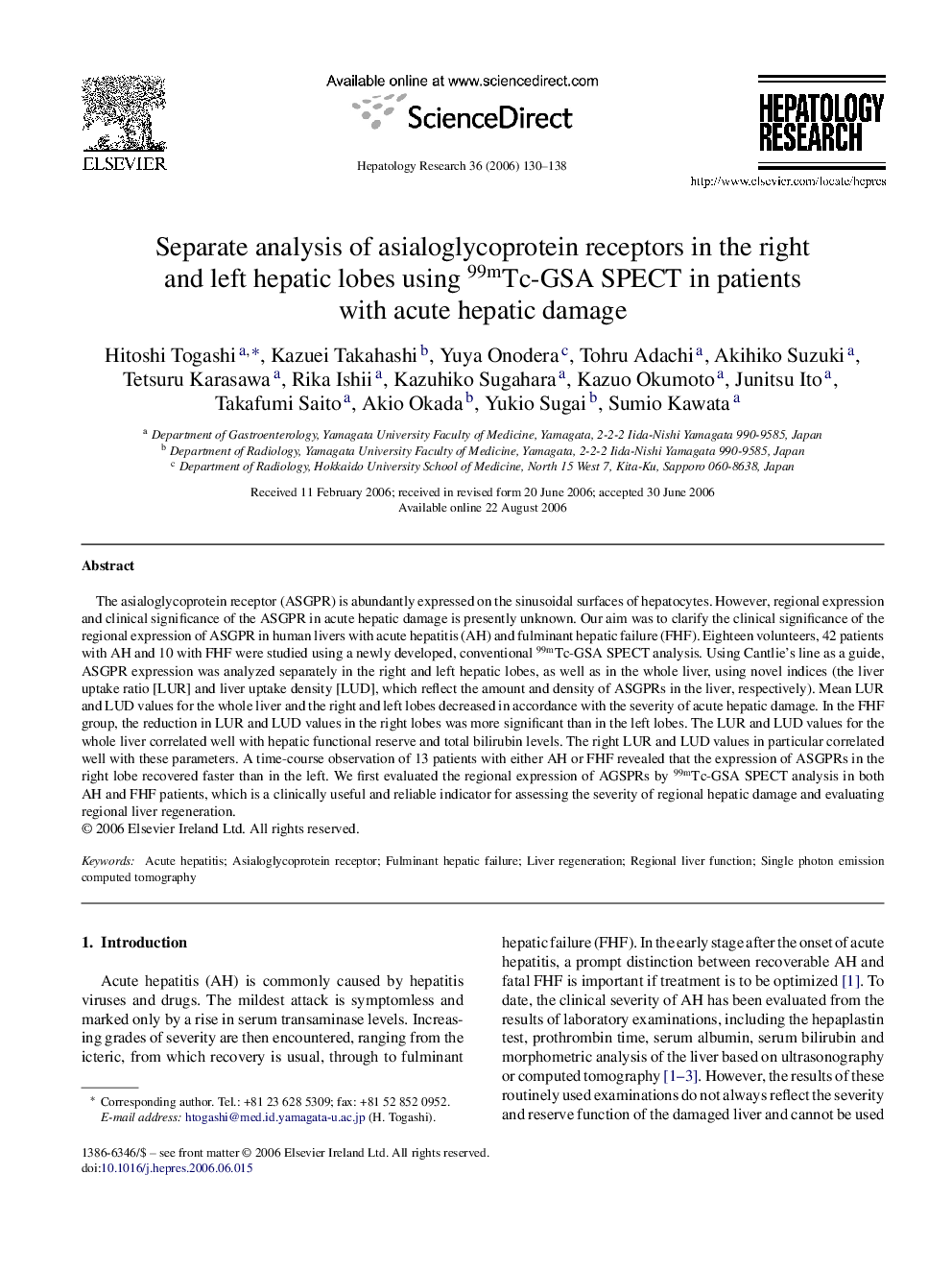| Article ID | Journal | Published Year | Pages | File Type |
|---|---|---|---|---|
| 3311505 | Hepatology Research | 2006 | 9 Pages |
Abstract
The asialoglycoprotein receptor (ASGPR) is abundantly expressed on the sinusoidal surfaces of hepatocytes. However, regional expression and clinical significance of the ASGPR in acute hepatic damage is presently unknown. Our aim was to clarify the clinical significance of the regional expression of ASGPR in human livers with acute hepatitis (AH) and fulminant hepatic failure (FHF). Eighteen volunteers, 42 patients with AH and 10 with FHF were studied using a newly developed, conventional 99mTc-GSA SPECT analysis. Using Cantlie's line as a guide, ASGPR expression was analyzed separately in the right and left hepatic lobes, as well as in the whole liver, using novel indices (the liver uptake ratio [LUR] and liver uptake density [LUD], which reflect the amount and density of ASGPRs in the liver, respectively). Mean LUR and LUD values for the whole liver and the right and left lobes decreased in accordance with the severity of acute hepatic damage. In the FHF group, the reduction in LUR and LUD values in the right lobes was more significant than in the left lobes. The LUR and LUD values for the whole liver correlated well with hepatic functional reserve and total bilirubin levels. The right LUR and LUD values in particular correlated well with these parameters. A time-course observation of 13 patients with either AH or FHF revealed that the expression of ASGPRs in the right lobe recovered faster than in the left. We first evaluated the regional expression of AGSPRs by 99mTc-GSA SPECT analysis in both AH and FHF patients, which is a clinically useful and reliable indicator for assessing the severity of regional hepatic damage and evaluating regional liver regeneration.
Keywords
Related Topics
Health Sciences
Medicine and Dentistry
Gastroenterology
Authors
Hitoshi Togashi, Kazuei Takahashi, Yuya Onodera, Tohru Adachi, Akihiko Suzuki, Tetsuru Karasawa, Rika Ishii, Kazuhiko Sugahara, Kazuo Okumoto, Junitsu Ito, Takafumi Saito, Akio Okada, Yukio Sugai, Sumio Kawata,
